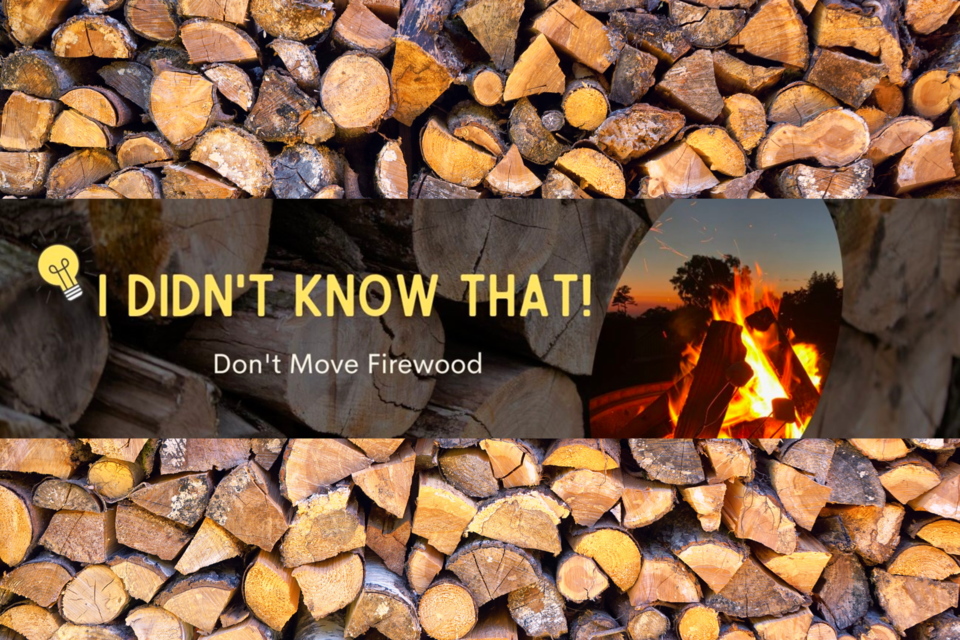For many, a camping trip is not complete without cozying up next to a campfire. As cooler temperatures finally arrive, take a look at this important message from the National Park Service:
After you check your destination for campfire restrictions, it’s time to gather your supplies! You grab the s'mores makings... matches... maybe a fire starter. But wait before you check firewood off your list.
Did you know?
Moving firewood long distances can spread invasive forest pests hidden in or on the wood.
Why Shouldn’t I Move Firewood?
Even though it may not look like it, firewood isn’t dead. Live wood-boring beetles, tiny insect eggs, microscopic fungi spores, and more can be hidden in and on even the healthiest looking wood. These organisms cannot travel far on their own, but can travel hundreds of miles hidden within a firewood bundle in your car or RV. When introduced to this new location, these pests and diseases can cause significant damage to native forests that have little to no defenses against this new threat. To help protect our forests, don’t move firewood.
Common Culprits
Check out this firewood map from DontMoveFirewood.org for pests of concern in your area, as well as firewood rules, regulations, and recommendations.
What You Can Do
You can help prevent the spread of invasive pests and diseases on your next camping trip by following these guidelines.
Know before you go. Check park websites and/or recreation.gov for information on campfires and firewood. Make sure to look for:
- information on fire restrictions and burn bans,
- if you can collect firewood or not, and
- if firewood is available for purchase in the campground and if not, the closest location to find firewood.
Buy it where you burn it. Ideally, you should get your firewood 10 miles or less from your destination. Generally, 50 miles away is considered too far. Check the DontMoveFirewood.org Firewood map to find out how far is too far in your area.
Buy certified heat-treated wood. Most packaged heat-treated firewood with a U.S. Department of Agriculture Animal and Plant Health Inspection Service (USDA APHIS) heat treatment seal or state- based (e.g., State Department of Agriculture) heat treatment seal is considered safe to move. If you’re unsure if the wood is certified heat treated, choose to buy it where you burn it.
Don’t take it home with you. These guidelines also go for the return trip! The firewood you get on your camping trip might have pests and diseases that your local area does not. Don’t move firewood back home! Leave the wood in the campsite for other campers or with a camp host.
Pass It On!
Did you learn something new? Pass it on! Protecting our ecosystems is a job for us all, but there’s no way for everyone to be an expert in everything. That’s why sharing knowledge is so important!
Download or screenshot this card to share with a friend or help you remember why you should never move firewood long distances. Thank you for helping protect local forests from invasive pests and diseases!
Check out other I Didn’t Know That! topics.




